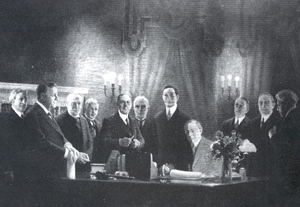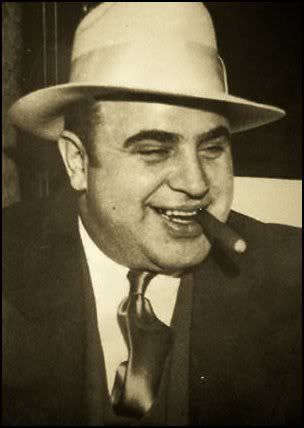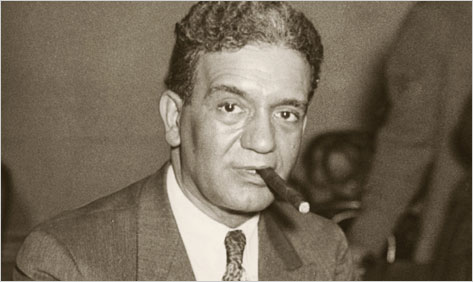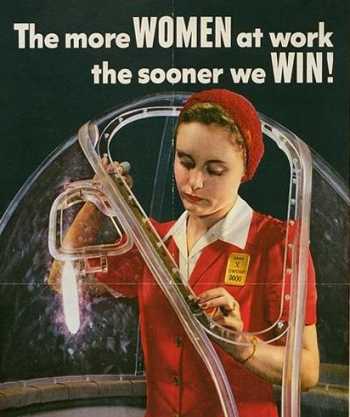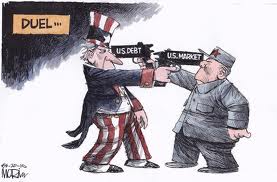BLOG FOUR
POST ONE: THE 1950s
TRUMAN AND EISENHOWER
POST ONE: THE 1950s
TRUMAN AND EISENHOWER
President Truman's presidential period after World War II involved labor rights. Truman, in order to spur the American economy, cut taxes, offered loans to American businesses and instituted the GI Bill in 1944 (Helfrich). Prices continued to rise for American goods due to demand for them, which was good news for farmers and manufacturers across the States. To curb rising prices, Truman tried to institute various measures most of which did not pass the Congress, and inflation resulted with 30% price increases in 1946 (Helfrich).
The attempted curbs on rising prices resulted in many labor strikes, where workers thought they should be compensated based on inflation around them. Congress was so aligned with the interests of the workers, and labor, that when Truman tried to pass desegregation measures he was stopped by Congress (Helfrich). These measures against him allowed for the triumph of the Republican party (Truman was a Democrat) with World War II veteran Eisenhower elected president.
Eisenhower gave key deals over to private businesses, including the building of dams that was usually done by the Army Corps of Engineers. The Northwest Power and Conservation Council reports that "in 1953, President Dwight Eisenhower shifted the nation’s power policy from one of federal dam construction to one of encouraging local utilities to build dams on major rivers". This propensity to build dams paved the road for hydropower in the future.
Perhaps best known for his ambitious highway projects today, Eisenhower was still dogged by troubles during his term. The USSR had a solid lead on the space race during his presidency with Sputnik in 1957, and charges of corruption within his cabinet were solidified upon chief assistant Sherman Adams admitting that he had taken bribes for government contracts (Helfrich).

President Eisenhower
Copyright, Rutgers
Works Cited
Helfrich, Ron. "US History Civil War to the Present: A Thematic History". 2012.
"Hydropower". Northwest Power and Conservation Council. http://www.nwcouncil.
POST TWO:
THE 1960s
In the Jonathan Haidt interview on Bill Moyers, I became very interested on the subject of tribalism in the United States government. Haidt presents the idea that liberals are more open to experience, and conservatives are more loyal and dependable in their outlook. The trouble with this difference is not that it exists, but instead that it divides the American government so thoroughly.
Haidt presents the idea that the baby boomer generation, which is currently in the position to serve prominently in the United States government, had been so divided during its youth along the "good vs. evil" boundary that its been a hard outlook to shake. The baby boomer generation experienced some of the greatest social upheavals in United States history. The USSR vs. the US prompted fear and hate for communism and anything vaguely socialist. Then, the hippie and free love movements clashed with the morally conservative outlook of traditionally run Christian homes. This occurred not only in popular media criticizing the hippie outlook but also during the Vietnam War peace protests (Helfrich). During the 1960s, civil riots caused many to think about black vs. white, and choose a side (desegregation or not). Furthermore, homosexual rights protests in New York and California caused many to determine which side they were on (Helfrich).
This absolute determinant, of either you were on this side or that one and there was no middle ground or gray area, has seeped into the US government as extensive tribalism. As Haidt explains, now you are either fighting evil, or you are evil itself. The age were liberal republicans and conservative democrats could easily find middle ground is disappearing as liberal republicans and conservative democrats are harder to establish. Haidt explains that due to the "culture wars" going on during the 1960s, it has become difficult for baby boomers to be comfortable in a gray area, or middle ground.
This has caused bipartisan politics on a massive scale. During the segment, Moyers points out that there has always been a competitive pair, like the Patriots vs. the Giants in football. This competition spurs each side to perform better, and creates significant loyalty in the players and fans. However, this inability to detach from the competition causes issues in American politics, where bills and statutes can not get passed due to an overall inability to compromise.
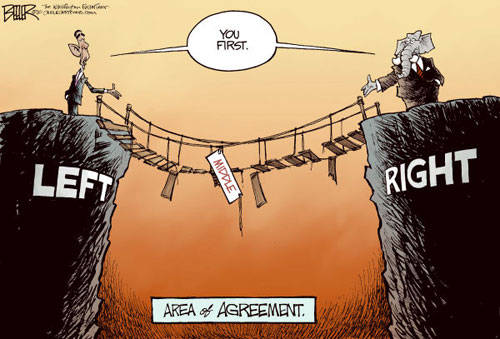
Todd Baxter, Christian Science Monitor
An inability to see the other side as having the potential good, or even human, is not a new one. In times of war, this is common and has resulted in horrific tortures and mass death.
Because of Haidt's establishment that the more loyal person is one that is conservative, I was curious as to how this played out in interpersonal relationships in terms of divorce. According to a relationship coach who advises couples thinking about divorce, "in 2005, the 15 states with the highest rates of divorce voted for Bush, while 10 states with some of the lowest divorce rates in the country voted Democrat" (Hardy). Clearly the more loyal pair (the conservatives) weren't the ones staying together. Is it because loyalty, as Haidt defined it, is to an ideal for many conservatives and not to each other? Maybe tribalism and the loyalty to others in the same group hasn't extended as far into the conservative camp as I assumed.
Hardy shows that there is a higher rate of marriage in conservative states, and so this adds to the higher rate of divorce in those same areas. According to Hardy, "since many Republicans believe in the family values that the Republican party endorses, when their own marriage does not rise up to those beliefs, they are unable to accept that not all marriages can live up to such high standards". This again reinforces Haidt's argument that there is a loyalty to an ideal that is not the same as loyalty to others that may share that same outlook.

1909 Article from newspaper The Republican
FREEDOM RIDERS
In the stirring American Experience piece, Freedom Riders, viewers are taken through the journey these heroic men and women took to try to get to New Orleans with civil rights group CORE. Plagued by a missing leader, and drivers who refused to get on board the bus with them, the Freedom Riders were stopped before they reached their destination. The violence that ensued from crowds in Alabama was enough to call in President Kennedy's aides, so that they could safely get the Freedom Riders out of the South. The division between state and federal lines was so complete that nothing could be done for the Freedom Riders due to the racial hatred of state officials until federal officers arrived to extend influence.

Freedom Riders in Mississippi, Associated Press
The civil rights movement in the early 1960s had nonviolence at its core. The popularity of Martin Luther King Jr.'s peaceful protest style invited inevitable violence but did not fight against it. The Freedom Riders realized that they were nonviolent but they would be courting Deep South hatred and violence. In this aspect, some of them came to see themselves as martyrs for the cause. The idea of dying, or sacrificing, for a cause is more popular in other cultures than in the United States. The Iranian army, for example, deployed some of the first instances of suicide bombing and suicide lines during the Iran-Iraq War. This method isn't surprising to anyone familiar with Iranian culture, due to the prevalence of heroes dying and being martyrs for various causes throughout traditional literature. In Iran's culture, to die for a bigger cause is not such a huge task. This isn't true of the American Freedom Riders, who after bouts of violence, understandably realized that they were not martyrs and very much wanted to live.
The interesting thing about being a martyr for a cause is that it draws considerable attention to the cause, and may even help it continue. After the Martin Luther King, Jr. assassination in 1968, school integration was pursued more ardently and passed a progressive method in the Supreme Court in Swann vs. Charlotte-Mecklenburg Board of Education in 1971.
The Northern imposition on the South was not a new theme in American politics. Southerners still look back fondly on the Confederacy, with Confederate flags being a staple in many southern cities and towns.

Confederate Flag Greeting Visitors to Lexington, VA
The idea of desegregation was also seen as a Northern imposition, and a significant change in life for Southerners which they resisted. The natural slow movement of Southern life (influenced by culture as well as industry, where due to geography such as the Blue Ridge Mountains, swamps and marshes, products took longer to move from place to place) has never meshed exactly with Northern industry connected easily by railways, and cultural changes due to rapid, diverse immigrant influxes.
Returning to Haidt's piece with Bill Moyers, this difference in environment can persuade the conservative vs. liberal outlooks. In the South, immigration from European and other countries was much more limited than it was in the North. In the North, Ellis Island was active from 1892 until 1954. There is no "Ellis Island of the South". Because Northerners were coming in contact with different cultures more rapidly and more frequently, the possibility for them to be open to different outlooks was more probable. This wasn't true in the South.

Southern Pride Belt Buckle
Due to Southerners taking these qualities as points of pride, any influence on these attributes was viewed with hostility. As the American Experience episode shows in detail, Southerners became increasingly irritated as they were called "bigots" and "racists" by Northern media. Suddenly reporters from big newspapers in the North wanted to know why Southerners weren't changing ways that had been in place for decades. This elitist attitude from the North, which was not unknown to them after the Civil War, did not inspire Southerners to take to desegregation easily.

Associated Press, 1960
The American Experience episode also explains President Kennedy's movements on civil rights at the time. Kennedy was more concerned with the USSR and freedom internationally than freedom at home. As the Helfrich text explains, Kennedy drew on the differences between himself and Eisenhower in order to win the presidency. He claimed that a "missile gap" was being created between the United States and the USSR and so America was in danger from our number on enemy. This was false, but because Kennedy used it to win election, it was a popular sentiment in that it played on people's Cold War fears. This helped drive his focus on summits with Russian leaders. However, Kennedy was not entirely impermeable to the Civil Rights movement. His call to Coretta Scott King after her husband's arrest was a very favorable, compassionate move and helped him win some of the black vote, to go on to win by the record-breakingly small 0.1% margin (Helfrich).

Kennedy with Khrushchev, 1961
The idealistic outlook of Kennedy did not do much to change the administration (this sounds eerily familiar to complaints about the Obama administration). Unlike war general Eisenhower, Kennedy saw communism as a a solid evil, global menace and did not consider nuances, cultural or otherwise, that might have helped him internationally. His establishment of the Peace Corps, the hope and dream of many rich liberal arts kids today, has been criticized as an extension of American colonialism (Helfrich). And so his international intentions, however heartfelt, had the tendency of falling flat.
On a certain scale, this huge priority for positive international image is evident today. According to Parade magazine, the United States gave approximately $26 billion in foreign aid in 2008. This is staggering, considering how many people in the United States need help too. Out of a population of 300 million, 12 million children are considered to be "at risk" for going hungry today. This ideal of presenting a certain image internationally, and largely ignoring domestic issues, is by no means limited to Kennedy's tenure.
This dichotomy was also mentioned by Haidt, who drew on Machiavelli to state that our reputation and image are more important than the reality of our actions.
Works Cited
"Experiencing Traditional Southern Cooking and Hospitality: A Brief History". Accessed April 5, 2012. <http://www.bluewillowinn.com/southhosp.htm>
"Freedom Riders". American Experience. <http://www.pbs.org/wgbh/americanexperience/freedomriders/watch>. 2010.
"Jonathan Haidt Explains Our Contentious Culture". Bill Moyers. February 3, 2012. <http://billmoyers.com/segment/jonathan-haidt-explains-our-contentious-culture/>.
Hardy, Marcelina. "Divorce Statistics Republicans vs. Democrats". 2012. <http://divorce.lovetoknow.com/Divorce_Statistics_Republicans_vs._Democrats>.
Helfrich, Ron. "US History Civil War to the Present: A Thematic History". 2012.
"Hungry Children in America?" Feed the Children. <http://www.feedthechildren.org/site/PageServer?pagename=org_us_programs>.
O'Brien, Rebecca. "Who Gets US Foreign Aid?" Parade Magazine. December 14, 2008.
POST THREE: THE 1970s & 1980s
President Nixon served the United States as its president from 1969 to 1974. He is perhaps best well known for his role in the Watergate scandal, which caused his resignation of the presidency.
Time magazine started publishing the Pentagon papers, which highlighted political handling of the Vietnam War in the White House, in 1971. Nixon was disturbed by this and started his surveillance war against the democratic party, culminating in planting bugs in the Democratic National Committee headquarters in Watergate, Washington DC (Helfrich). This direct infringement was believed by Judge John Sirica, who kept the investigations on Nixon going until his resignation.
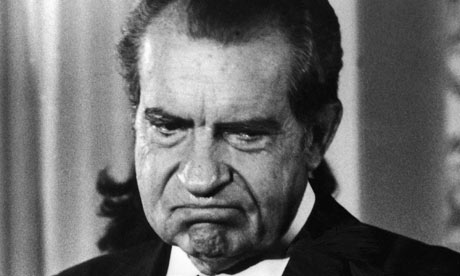
I believe the power of the press in White House politics had been different until up to this time. President Kennedy's personal life, and many mistresses, were not publicized by any popular press during his presidency. I believe as television came into being, Americans not only became curious in knowing the full story, but also became aware on how much information they had at their fingertips. With the advent of television, news programs became popular and started to fill vital time slots (Helfrich). The CBS Evening News with Walter Cronkite could and did broadcast from all around the world so Americans could see what was going on in Vietnam and around the globe. Walter Cronkite was named the "most trusted man in America" in a poll in the 1970s, and his coverage of the Iran hostage crisis, lunar expeditions, Nuremburg Trials, Watergate, Vietnam War, JFK and MLK assassinations, and many other huge news events made it a well deserved title. The popularity of television in the 1970s serves as another example of how technology changes impact the culture of that society.
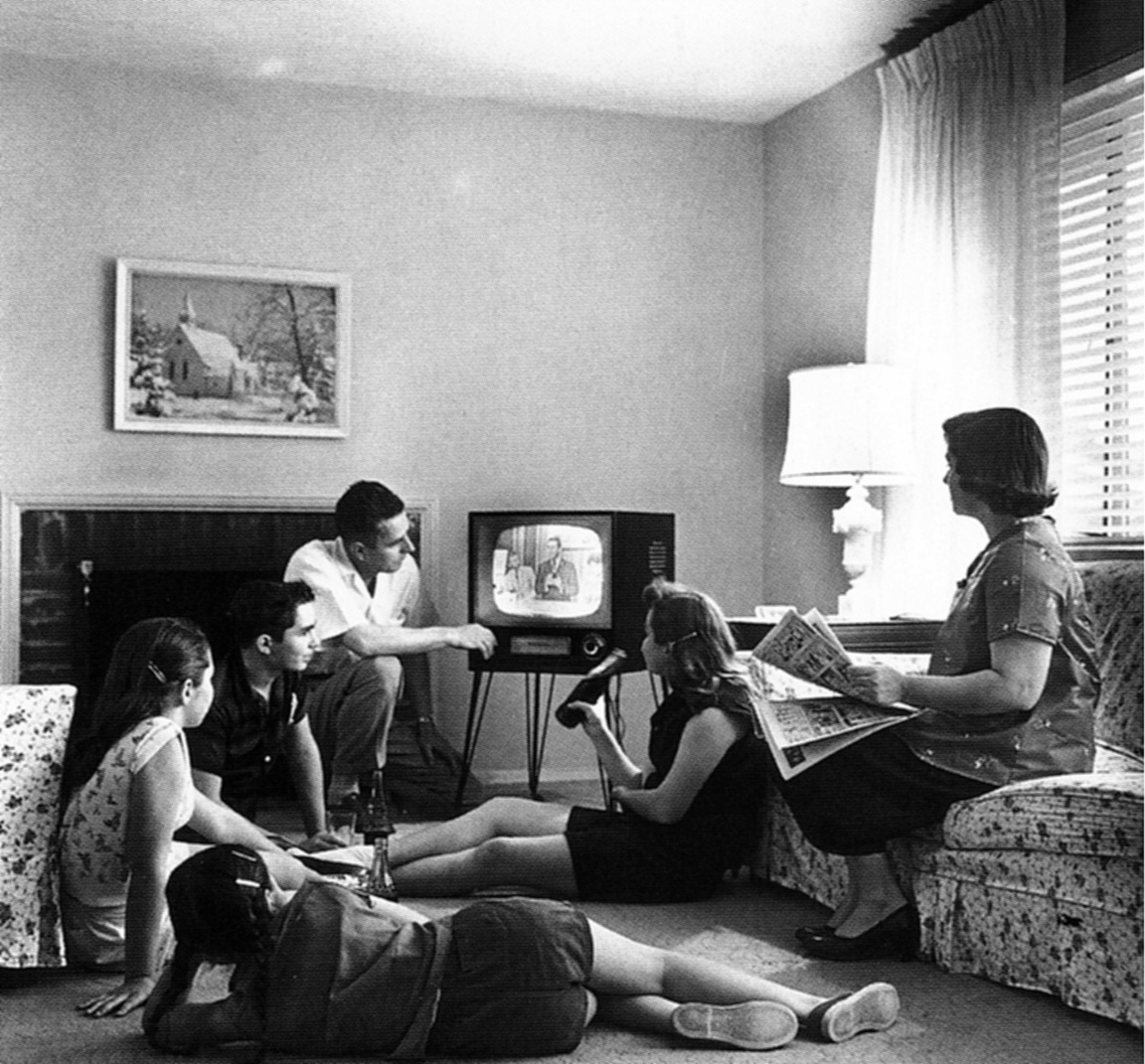
Reuters, 1974
As discussed in class, television shows became hallmarks of those specific eras. With its conspiracy theories and UFO-centric plotlines, The X-Files defined the 1990s. Similarly, with its race overlaps and Cold War/Space War themes, Star Trek defined the 1960s and 1970s.
The 1970s saw hippie revolutions, as protesters against the Vietnam War joined for free love and peace across college campuses everywhere. Music groups perpetrated these images and outlooks, and media was more and more accessible due to technology advancements. Entertainment shows such as The Ed Sullivan Show made pop music available in every family's living room, and spurred teenage fanaticism for boy bands and singers. The 1980s would see a fundamentalist backlash against the free love attitudes of the 1970s.
The 1980s saw a theme in politics that continues today: the working class man versus the liberal class man. Reagan was able to harness the anger of the working class at high taxes, and the image of America as a free love, drug giving, abortion loving, totally tolerant, living on some artistic trust fund hippie. During this time, the Republican party was taking the old Democratic stomping ground of the South, as they adopted their rhetoric (Helfrich). This divide between rich and poor hasn't stopped affecting American politics, which can be seen in Bill Moyers' piece from January, 2012: "On Winner-Take-All Politics".
Moyers argues that economic analysis is incomplete without political analysis too. The old laissez faire attitude seems to continue to economic analysis, as economic disparity cannot be entirely explained without looking into political agendas at the time. Moyers hones in on a divide used by American politics since Reagan: "Fixated on the widening gap between skilled and unskilled workers, they have divided the economic world into two large groups: the “haves” with college or advanced degrees; the “have-nots” without them." As college degrees become more and more widespread, America sees itself with more skilled workers than in 1970. According to an article by Sandy Baum and Michael McPherson for The Chronicle of Higher Education, "college graduates make up a larger share of the population now than in 1970". Because of the larger group, more divides can be seen and made. Divisions along industry type, along type of degree, along college location and ranking, have begun to appear more intensely.
Moyers reports on work by two French economists (Piketty and Saez) now studying American economy: "According to Piketty and Saez’s revealing evidence regarding pre-tax incomes, we have gone from Broadland to Richistan—from a world in which most of the nation’s income gains accrue to the bottom 90 percent of households (the pattern of the economic expansion of the 1960s) to one in which more than half go to the richest 1 percent (the pattern of the last economic expansion from 2002 to 2007). For those in the tightly circumscribed winner’s circle of the winner-take-all economy, the last generation has truly been a golden age". The issue is not that some people are making money and some aren't. The issue is that those at the top are making too much money, and face no curbs on it, and do not feel obligated to share with the masses. There are, of course, outliers to this. Bill Gates and Warren Buffett, to name two. But under Republican presidencies, spikes can be seen in the income allowed for these top of the top:

Reagan advocated this trend magnificently. According to Helfrich, "it was the wealthy who benefited most from Reagan's tax cuts. The rate for the top 1% was reduced from 70% to 28%." He also cut government programs for the poor to reduce government spending, an attempt to seem like he was saving fundamentalist America. The result was a spike in the unemployment rate, as many people depended on American programs and tax cuts aimed at their income brackets. Reagan was blind to the idea that maybe Americans were a bit socialist, with their dependence on the government, after all.
The striking income disparity shown above continued since the 1980s, and is more reminiscent of countries with no history of a middle class (i.e., Saudi Arabia, Dubai). The rich are allowed to get richer, while the lower and middle classes hang onto what they had previously. The 15,000 families that Moyers recognizes in his article may be simply handing over positions to each other, maintaining their level at the top, maintaining their stronghold on the leisure class.
Social networking has become more and more important to be able to get a job. With the digitization of job applications, it's easy to get lost in the pile. Not only do you have to have an excellent resume to stand out, you must answer every question for the online questionnaire absolutely correctly, your emails to company representatives must be pristine, and your physical bearing when you actually (if you do) meet must be suitable. And even then, you might not get the job. This process goes away, of course, if you happen to know the CEO. According to an article by Josh Constine of Telecrunch, "of these 22.1 million Americans with recently found jobs, 78% attributed their job to Facebook, while 40% cited assistance from LinkedIn, and 42% cited Twitter". So 1 in 6 job seekers found their latest job on a social network. That is a huge jump from previous years, and hasn't been seen before. Finding a job on a social network can be as easy as messaging or posting that rich kid from high school whose dad was a manager, or telling some jokes to the guy who recently got promoted. It's all about knowing someone who knew someone, and as a result, the people who may be more than qualified without this ability, or access, or knowledge, are getting left behind.
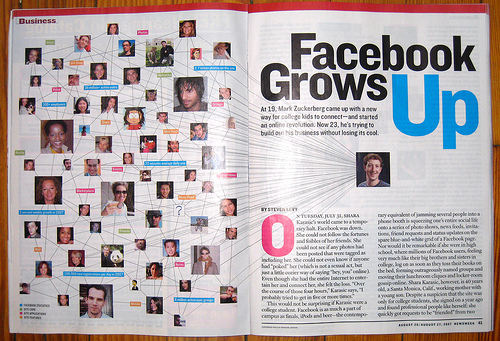
In the 2007 award-winning NOVA documentary, "Judgment Day: Intelligent Design on Trial", the case of whether or not intelligent design could be studied in schools for science is debated. The NOVA documentary starts in Dover, Pennsylvania, where science teachers are required to read a disclaimer about evolution as just a theory before teaching it. Several teachers refused to read the disclaimer, citing it as ridiculous, and were put on trial in the case "Kitzmiller vs. Dover". Intelligent design is widely thought to be a religious doctrine by many scientists and liberals, while proponents of ID cite holes in evolutionary theory as the proof that ID has some validity. After hearing testimony from scientists in favor of and opposed to Intelligent Design, Judge John E. Jones III rules that Intelligent Design is an inherently religious theory and therefore the teaching of it is not permitted as part of a science curriculum.

This documentary can be seen as a result of fundamentalist America clashing with scientifically progressive views. The idea of America as a Christian-Judeo nation is upheld in part to maintain the traditional American outlook. Very few European and South American countries consider Creationism to be taught at all in their public schools, and so it can be considered a solely American phenomenon. Creationism is a pillar of this traditional America outlook, and I believe supporters of it are more concerned about traditional America falling apart than the actual theory. Their support makes sense, as they see their children watching television which can be very adult in content. According to a University of Michigan Health System report, "TV viewing among kids is at an eight-year high. On average, children ages 2-5 spend 32 hours a week in front of a TV—watching television, DVDs, DVR and videos, and using a game console. Kids ages 6-11 spend about 28 hours a week in front of the TV. The vast majority of this viewing (97%) is of live TV".

Television's popularity got its start in the 1970s, but wholesome programming hasn't skyrocketed since then. Many television shows rotate around murders (CSI: Miami, CSI: New York, Grey's Anatomy, Castle, NCIS, House, Bones, etc.) or sexually deviant plotlines (Desperate Housewives, Jersey Shore, 16 & Pregnant, Teen Mom, Teen Mom 2, The Real Housewives series, GCB, etc.) or both. This type of programming is not suitable for young children, as it can be graphic. Furthermore, advertising has become more aggressive with more and more ads everywhere you look. From the internet, to products, to magazines, advertising can be unsuitable for children and teens to look at and think about.
As a result, a backlash against these values manifests itself in support for Creationism, pro-life rallies, and the like by using rhetoric about "traditional America". This resonates with a great number of Americans, and the Republican party uses it to its advantage.
References
Baum, S. and McPherson, M. "Assessing the Economic Advantage of a College Degree". The Chronicle of Higher Education. January 12, 2010. http://chronicle.com/blogs/innovations/assessing-the-economic-advantage-of-a-college-degree/24733.
Constine, Josh. "1 in 6 Job Seekers Found Their Latest Job on a Social Network". Techcrunch. November 16, 2011. http://techcrunch.com/2011/11/16/social-recruiting/.
Helfrich, Ron. "US History Civil War to the Present: A Thematic History". 2012.
"Television and Children". University of Michigan Health System. August 2010. http://www.med.umich.edu/yourchild/topics/tv.htm.
"Winner-Take-All Politics". Moyers & Company. January 13, 2012. http://billmoyers.com/content/chapter-one-of-winner-take-all-politics/.
POST FOUR: THE 1990s & 2000s
In the 2000s, American economic turmoil after September 11 dominated markets for years to come.
In the PBS piece, "Inside the Meltdown", economic fears from inside corporate conglomerates are explored and shared. The housing bubble burst, and mortgages built on faulty loans and credit went down along with them. Banks faltered. And unlike economic crises of previous years, the American government stepped in fully to try to prevent further damage.
As "Inside the Meltdown" develops, it's clear that there are a few central characters, one of whom is Ben Bernanke. Bernanke studied economic depressions in full while a professor at Princeton, and so became a man looked to for his experience during the economic time. Bernanke's movements to stabilize markets by conducting "marriages" between troubled firms and by "bailing out" large companies was opposed by Treasury Secretary Henry Paulson, whose outlooks were dominated by laissez-faire attitudes that also are exhibited by right-wing politicians. Eventually, however, giant mortgage companies Freddie Mac and Fannie Mae fell, spurring the government to act. When Lehman Brothers faltered, and called on the government to save it and bail it out, Paulson and others refused. As the investment bank fell, the stock market crashed.

As "Inside the Meltdown" reports, '"I think that the secretary of the Treasury could not fully comprehend what that linkage was and the extent to which this would materialize into problems," says former Lehman board member Henry Kaufman.' Paulson's change in outlook resulted in the $700 billion bailout plan formed by himself and Bernanke, which passed Congress in 2008.
The "Inside the Meltdown" piece shows how one decision about one company affected the American market for years to come. The importance of linchpins in economics cannot be understated, and today the marker of an economy tends to be a bank. This is similar to the crash of 1929, where banks were under similar circumstances but did not expect bailouts.
This bailout plan is more comprehensive than others because of its overarching qualities. The multibillion dollar bailout plan reflects a "$400-$800 credit for many taxpayers", "tax credits for sustainable efforts in the home", "higher unemployment benefits" and "help for rural areas" (Kirchhoff). Unlike 1929, the everyman has more of a place in this government with their economic bailout. Looking forward to job creation was assisted by the bailout, which planned for road and rural development in its use. According to the article by Kirchhoff, "the non-partisan Congressional Budget Office says the bill could increase employment in a range of 800,000 to 2.3 million jobs by the fourth quarter of 2009 and 1.2 million to 3.6 million by the fourth quarter of 2010".
Another determinant of economic turmoil has been the investigation of CEOs lifestyles compared to the companies they run. The income gap and responsibility gap has been widening in the American economy. As Bill Moyers investigates this with John Reed on "Big Banks' Power and Influence", more can be seen about the powerful linchpin of American economies: banks.
Bill Moyers reports that during 2008, Citigroup also faltered and taxpayers paid more than $45 billion to save it. However, it continues to fail stress tests despite the extravagant lifestyle of its CEO, Vikram Pandit. According to Moyers, "Vikram Pandit, took home almost two million dollars in salary, almost four million dollars in deferred stock, stock options that may be worth as much as six and a half million dollars, and a $16 million retention bonus. And yet just a few days ago, Citigroup failed the latest stress test by the Federal Reserve. It may not have the means, in order words, to survive another financial fiasco".
This attitude should not be accepted as normal for the economic conditions. In comparison, in 1929, CEOs were heavily involved in their companies during the crash, and suffered as they did. Some committed suicide and effectively went down with their company during the crash. Today, CEOs no longer feel any loyalty to their brand which pays them so much. This horrible leadership may trickle down and cause so many problems with these banks.
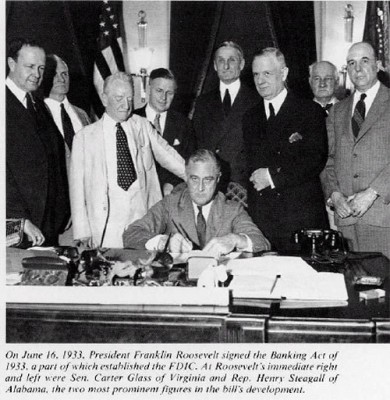
The Signing of the Glass-Steagall Act of 1933
Moyers touches upon the Glass-Steagall act of 1933, which prevented big banks from merging and creating monopolies in an attempt to counteract and prevent the dismal year of 1929. President Clinton did away with the act, when Citigroup wanted a merger: "Within two years, Glass-Steagall was deader than a doornail. With the stroke of a pen, President Bill Clinton signed legislation that eliminated its protections and gave Citigroup the green light". The attitude of "too big to fail" was in full swing, and everything moved away from the theme that smaller branches were not as efficient as big ones.
Investment banks handle their customers, large companies, like any other bank. However their movements have a bigger sway over markets than personal interactions can. According to a New York Times piece analyzing bank success from 2011,
"First, America’s smaller banks are still the primary providers of capital to small businesses, which are in turn the main engine of job creation. Fewer banks issuing less credit to small businesses is hardly an ideal recipe for bringing down the country’s 9.1 percent unemployment rate.
Second, as big banks increase in size, so does the potential damage to the economy and the government’s finances should they fail. And that in turn increases the chances that policy makers and regulators become less inclined to actually let them fail and turn instead to hazard-ridden bailouts — the very thing that recent reforms were supposed to prevent."
This article brings up many fine points that economic advisors in D.C., who may have friends in administrations as John Reed reveals, should listen to. Smaller banks that are able to remain small, and not be sucked up by large conglomerate banks, can be considered economic locomotives. Their ability to do more efficient and painstaking credit searches, their customer loyalty and understanding, and their ability to provide capital to small businesses across the country fuel the American economy. As bigger banks look to large companies to reel in as clients, smaller companies and individuals suffer.
This segment by Moyers is so enlightening because we witness John Reed, who supported total elimination of the Glass-Steagall Act, desire to bring it back. He cites the need for rules, the need for regulations, the need for a "car to have brakes". While he knows he is a private sector guy, he realizes the need for rules, and that a breakneck speed economy is not going to fuel any success in the long-run.

John Reed on Bill Moyers
Moyers' segment with David Stockman reveals a name for this type of government dealings: crony capitalism. David Stockman says, "We have crony capitalism, which is the worst. It's not a free market. There isn't risk taking in the sense that if you succeed, you keep your rewards, if you fail, you accept the consequences. Look what the bailout was in 2008. There was clearly reckless, speculative behavior going on for years on Wall Street. And then when the consequence finally came, the Treasury stepped in and the Fed stepped in. Everything was bailed out and the game was restarted. And I think that was a huge mistake."
The bailout, Stockman says, did nothing to change the game in Washington, D.C., which is what needs to be done. The same figures are doing the same underhanded negotiations, causing conglomerates to form and disband, causing prices to ebb and flow, causing no real change to status quo which includes "too big to fail", which includes expectation for government bailout, which includes the swallowing up of small businesses (banks).
The connection between Wall Street and the White House is as strong as ever after 2008. The figures above from the Kirchhoff article may differ, but Stockman makes a strong case that every investment bank (perhaps excepting Lehman Brothers) was hurriedly salvaged and saved instead of letting fall, and this not only stabilized the economy, it also allowed business as usual. The problem with this approach is not necessarily the stability. It's the divergence between Wall Street and Main Street.
An example of this can be seen in the General Motors bailout. General Motors, as a company, hadn't made a decent product for years. They were continually being beat by foreign competitors like Toyota, Honda, and Hyandai. From 2000 to 2009, there was a consistent decrease in sales percentages from year to year, the highest being a 30% decrease from 2008 to 2009. This caused two bail-outs, one by President Bush, and the other by President Obama, to save one of the last American automobile manufacturers.
Private sector should allow for large companies, if they are making terrible products, to fail. According to Motor Trend, Japanese companies started to pick up speed in the 1960s and 1970s, and GM never really watched its back quite enough to realize that they would be sharing an American market at roughly the same percentage (18%) in thirty years. The Toyota Camry continues to be one of the highest ranked cars on the market, in terms of affordability, styling, gas consumption, safety, and many other qualities. As Toyota was churning out sedans in the 2000s, GM focused on Hummers for the consumer. When gas prices dipped, GM's automobile models were quickly out of fashion, and they could not turn around fast enough to compete with the Toyota/Honda sedan model. This was bad trend prediction by GM, and that is not how a major conglomerate should operate. A bailout cannot save a company from making bad decisions and alienating their consumers.
Motor Trend reports, in February 2012: "By late last autumn, the industry was looking at a 12.9-million calendar year 2011. The top three automakers were hovering a bit closer to that 18-18-18 model. GM said it was retaining most of its old Pontiac and Saturn customers, and Ford said it was doing the same with Mercury customers a year after killing that brand. Toyota was second-largest by market share in 2009 and on its way to 18 percent..." The 18-18-18 market share percentages is what is currently seen in the Western European market, with the Volkswagon Group, Ford and Renault sharing market space. Perhaps the American market can move towards that direction, with the direct competition spurring better model productions.


Copyright, General Motors and Toyota Motor Company
In "Bush's War", the famous Frontline piece, tones of regret from the Bush Administration can be heard for the first time. CIA analyst Paul Pillar begins to show signs of wavering loyalty to the Bush administration: “What was the purpose of it?” he says. “The purpose was to strengthen the case for going to war with the American public. Is it proper for the intelligence community to publish papers with that purpose? I don’t think so.” Then he adds something heard from almost no one else here: “I regret having had a role in that.”"
This ability to think critically and independently is a sign of a developed nation. In Bush's Administration, this quality severely lacked according to the piece. Bush was surrounded by yes-men, and perhaps partially fueled by revenge for his own father during the Gulf Wars. As Helfrich writes, "Perhaps the most striking achievement and
failure of the Bush presidency was the war against Iraq. On 2 August 1990
Iraq’s leader Saddam Hussein had, with what he thought was tacit American
support, sent 100,000 of his troops into Kuwait. They took the tiny Gulf state
in a matter of hours". The inability for an American president to effectively communicate with an Iraqi president, probably caused personal shame and embarrassment for the Bush family. I am convinced that Bush, Junior, saw this shame and wanted to avenge it. It has been suggested that the Iraq debacle cost Bush the next election.
George W. Bush's own human, basic emotions were not quelled by anyone able to say no, by anyone able to convince him that maybe the United Nations was right to reject these accusations of weapons of mass destruction. "Bush's War" underlines the culture of wanting to believe something is true, and being too afraid or too apathetic to really question its accuracy. Moyers reflects this opinion in his piece, "Buying the War" from The Bill Moyers Journal: "How did the mainstream press get it so wrong?...What the conservative media did was easy to fathom; they had been cheerleaders for the White House from the beginning and were simply continuing to rally the public behind the President — no questions asked. How mainstream journalists suspended skepticism and scrutiny remains an issue of significance that the media has not satisfactorily explored," says Moyers. The conservative media in this instance was not challenged enough by the liberal media...or the liberal media was powerless to stop the "cheerleaders".
In this age of advanced technology, where propaganda has the power to be everywhere, we can see the effect this has on politics. Essentially, the side that wins has the supporters that scream the loudest, whether or not they are right or wrong. This fact will dilute true political sentiment in favor of popular opinion (easily swayed, easily convinced, occasionally very very wrong) and the ones that suffer are the citizens.
"Inside the Meltdown". Frontline. PBS. http://www.pbs.org/wgbh/pages/frontline/meltdown/view/ 2009.
In this age of advanced technology, where propaganda has the power to be everywhere, we can see the effect this has on politics. Essentially, the side that wins has the supporters that scream the loudest, whether or not they are right or wrong. This fact will dilute true political sentiment in favor of popular opinion (easily swayed, easily convinced, occasionally very very wrong) and the ones that suffer are the citizens.
References
"Bush's War". Frontline. PBS. 2008.
"Buying the War". Bill Moyers Journal. PBS. April 25 2007.
Cox, R., and Currie, A. "The Hazards of Success in American Banking". The New York Times. August 23, 2011. <http://www.nytimes.com/2011/08/24/business/the-hazards-of-success-in-american-banking.html>.
"David Stockman on Crony Capitalism". Bill Moyers. March 9, 2012. <http://billmoyers.com/segment/david-stockman-on-crony-capitalism/>.
Genzlinger, Neil. "Waging the Iraqi War From Safely Inside the Beltway". The New York Times. March 4, 2008.
Helfrich, Ron. "US History Civil War to the Present: A Thematic History". 2012.
"John Reed on Big Banks' Power and Influence". Bill Moyers. March 16, 2012. <http://billmoyers.com/segment/john-reed-on-big-banks-power-and-influence/>.
Kirchhoff, Sue. "How Will the $787 Billion Stimulus Package Affect You?". USA Today. February 17, 2009. <http://www.usatoday.com/money/economy/2009-02-12-stimulus-package-effects_N.htm>.
Lassa, Todd. "US Market Share for the Top Five Automakers". Motor Trend. February, 2012<http://www.motortrend.com/features/auto_news/2011/1202_u_s_markets_share_for_the_top_five_automakers/>.
